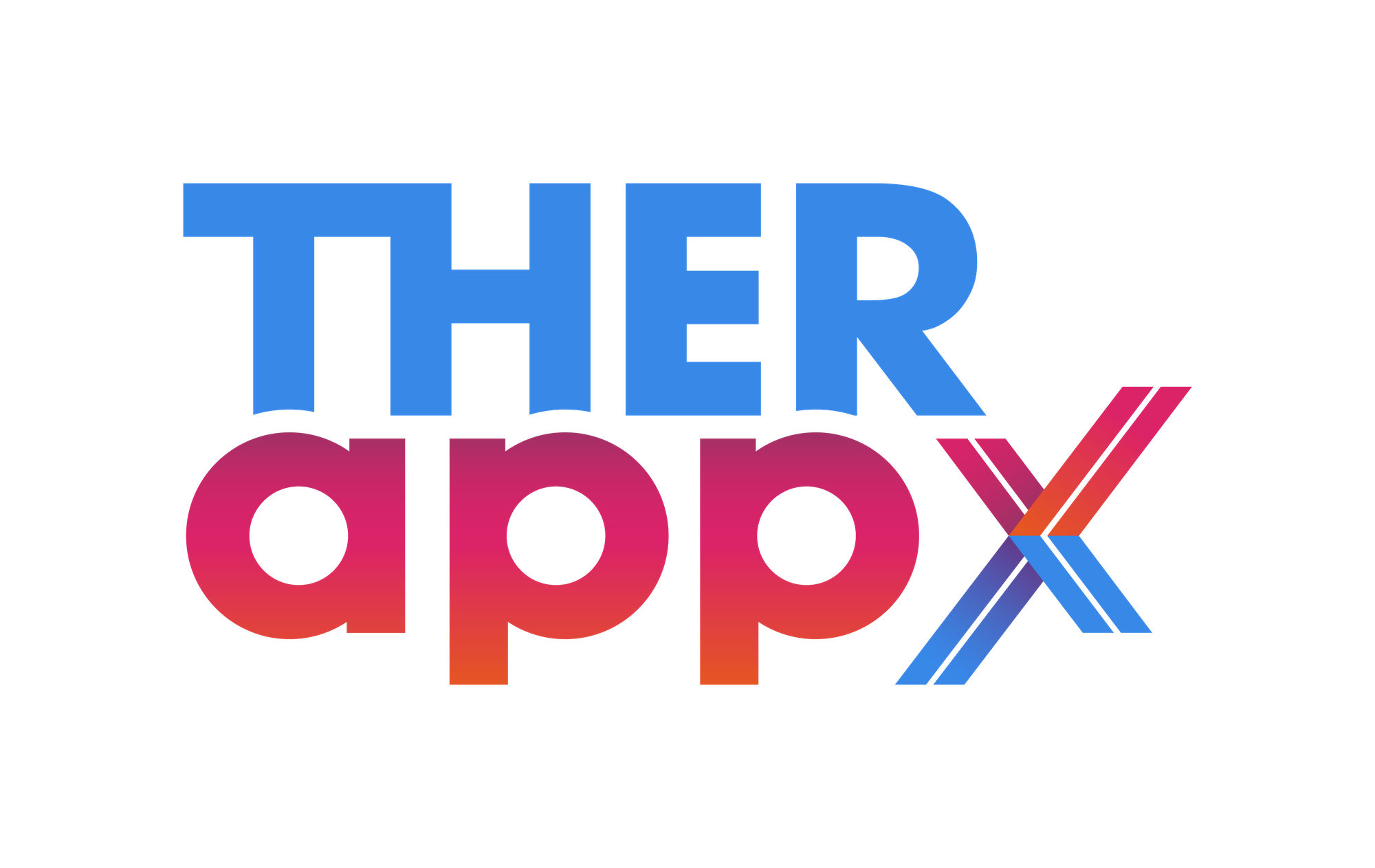Find Digital Health Tools for specific mental health conditions
Have you ever wondered how specific digital tools for mental health are? This quick analysis can help you get the big picture and key insights into using TherAppX Core.
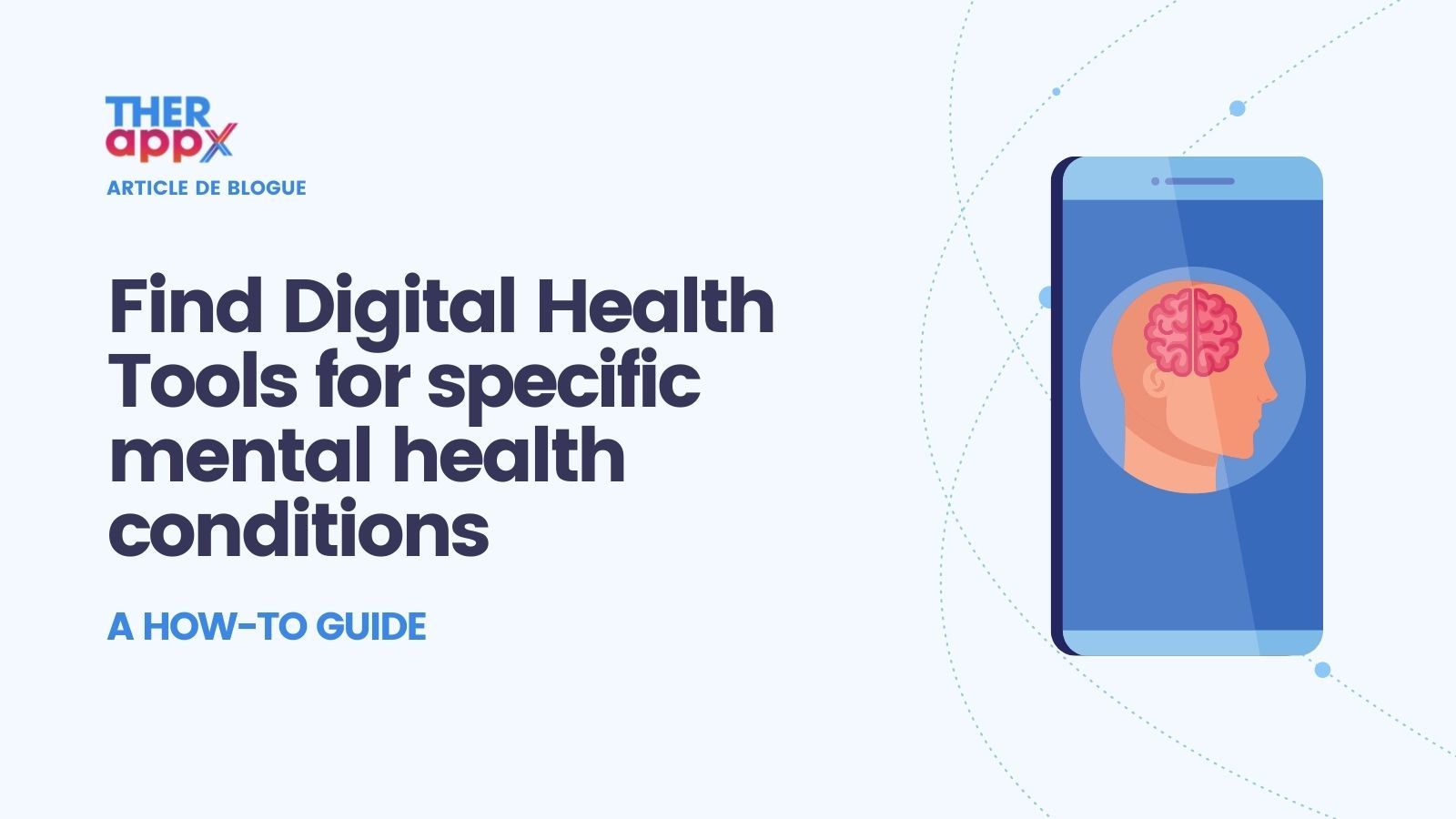
As discussed in the TherAppX Community here!
Have you ever wondered how specific digital tools for mental health are? In other words, do developers tend to design "general" or rather specialized tools for Mood and Depression, Stress and Anxiety, Panic Attacks, and so on? Is it possible to find digital tools that are tailored for "Trauma and Associated symptoms"? This is a question that TherAppX users have already asked several times. Our comprehensive database can help get the big picture. Here are some numbers!
759 Digital Health Tools for mental health
As of July 2021, this is the number of digital tools for mental health in the TherAppX database (iOS + Android). As an indication, this represents about 40% of all the tools.
80% of tools are not specific
This is the proportion of tools that address one of the three following conditions: "Mood & Depression," "Stress & Anxiety," and "Sleep & Insomnia." The market for digital tools in mental health appears limited to very general themes! If you are looking for more specialized tools, you are less likely to decide on many possibilities.
The Big Three in mental health
Here's a look at the overlap between the Big Three. In total, 105 digital tools provide functionality relevant to “Mood & Depression,” “Stress & Anxiety,” and “Sleep & Insomnia,” suggesting that these tools are probably “generalists.” In fact, about 200 digital tools cover both “Mood & Depression” and “Stress & Anxiety,” which could make it difficult for clinicians to find specific solutions to either. However, it all depends on the needs of your patient. For many of them, a general mental health tool may be the best choice.
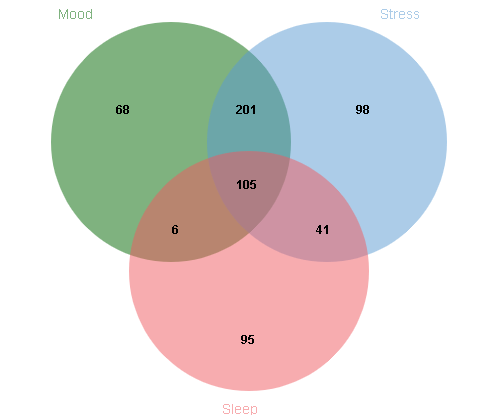
Beyond the Big Three
Included in this Venn diagram are the 6 most frequent mental health conditions in the database, namely "Mood & Depression", "Stress & Anxiety", "Sleep & Insomnia", "Suicide", "Trauma & Associated Symptoms" and "Panic Attacks". This shows that tools that deal with "Suicide" and "Trauma" conditions generally share few components relevant to other conditions. On the other hand, the condition "Panic Attacks" is very frequently targeted alongside "Stress & Anxiety," which is not surprising because panic disorder is actually an anxiety disorder.
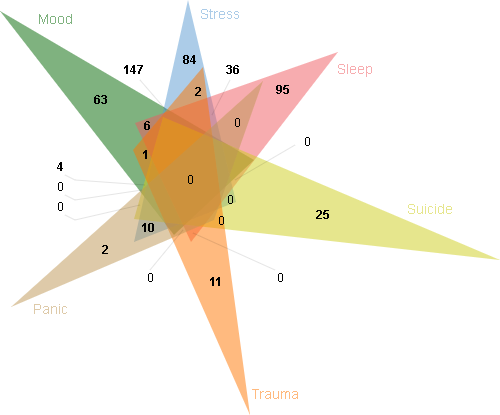
Now, how to find specific tools?
This analysis suggests key actionable insights into how you can use TherAppX Core. Even if they're rarer, finding tools that address specific thematics in mental health can be very valuable for your patients (e.g. to support in panic attacks). So, how can you find them? With the use of the free TherAppX Core version, you can filter according to 18 different thematics in mental health:
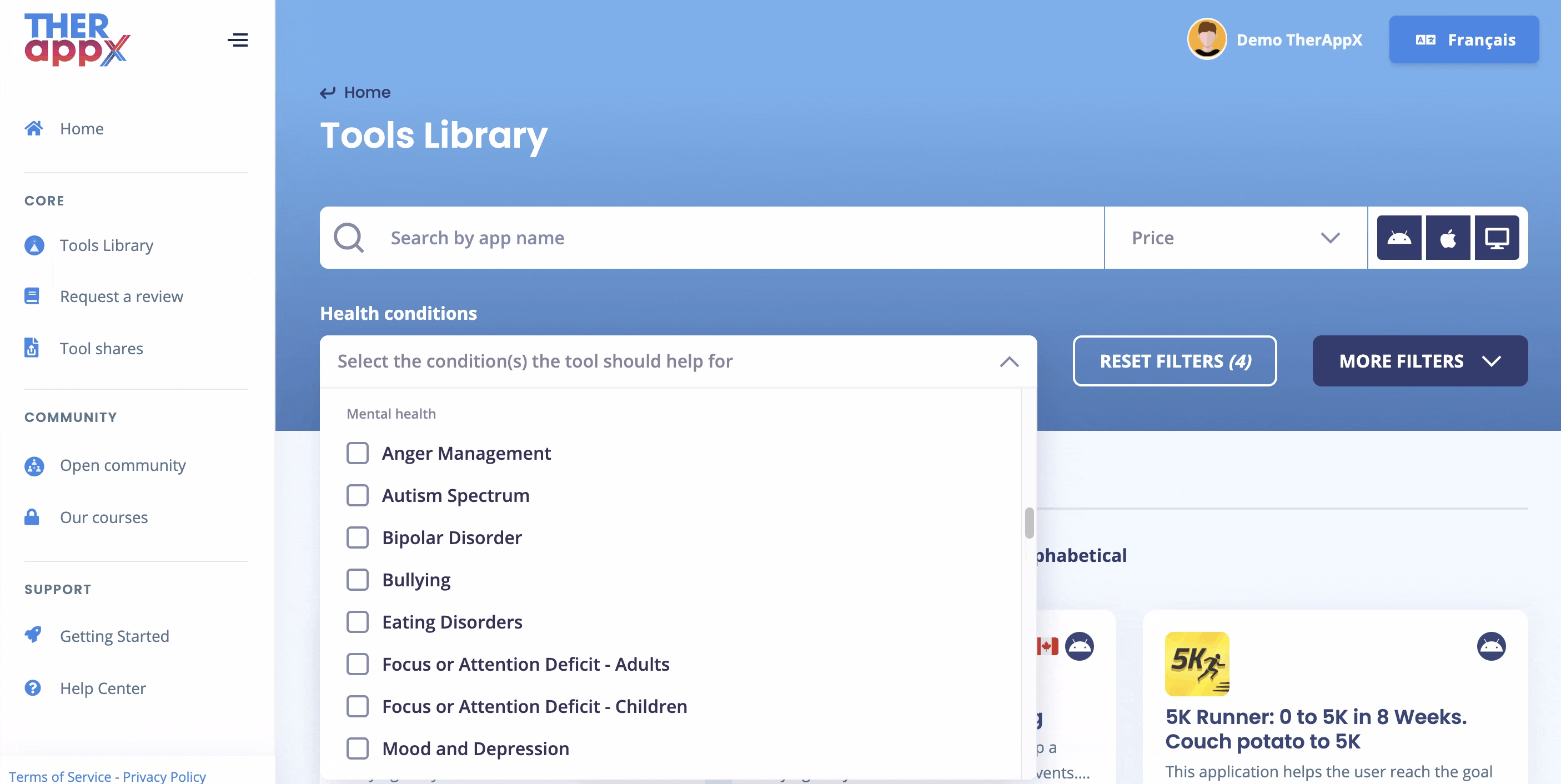
Before looking for specific tools for a patient, you would get the most out of the library by questioning your patients' basic needs regarding mental health. Are these needs specific?
In the example above, if you are looking for suicide prevention tools and filter "Suicide," you will find what you are looking for. The specificity of suicide prevention tools is high. However, other specific conditions can frequently be combined with more general ones. You can use Core's filters to select the appropriate condition, then be sure to search the list for DHTs that only address the condition you are interested in. This will increase your chances of finding a tool that offers particular functionalities. Many developers offer "general purpose" solutions for mental health rather than particular functionalities for particular conditions. If you are looking for such a tool, the "Mood and Depression" + "Stress and Anxiety" filters may be a good option.
You can create your free account to TherAppX Core now by following this link.
